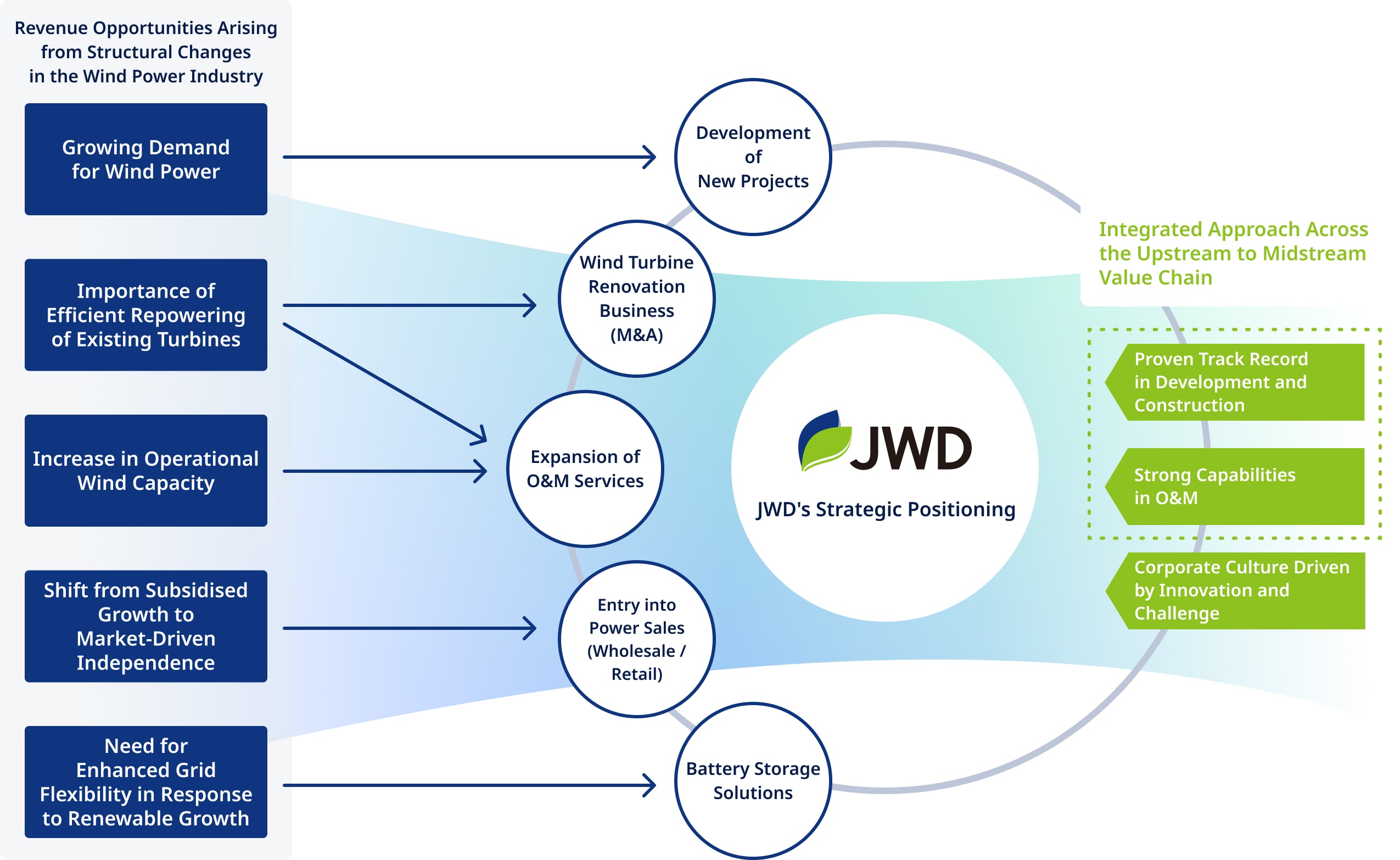Understanding Wind Power Generation
01Background and Future Outlook for Wind Power Generation
Wind power is increasingly recognised as a sustainable clean energy source due to its ability to generate electricity day and night as long as the wind blows, as well as its high generation capacity per turbine.
While Japan’s overall electricity demand has been declining due to population decrease and energy saving, it is expected to rise again with the advancement of digital transformation (DX) and green transformation (GX).
Industrial demand is particularly projected to grow, driven by the construction of new semiconductor factories and data centres.
Electricity Demand Forecast and Energy Supply Outlook (Japan)
Breakdown of Actual and Projected Domestic Electricity Demand (consumption end)
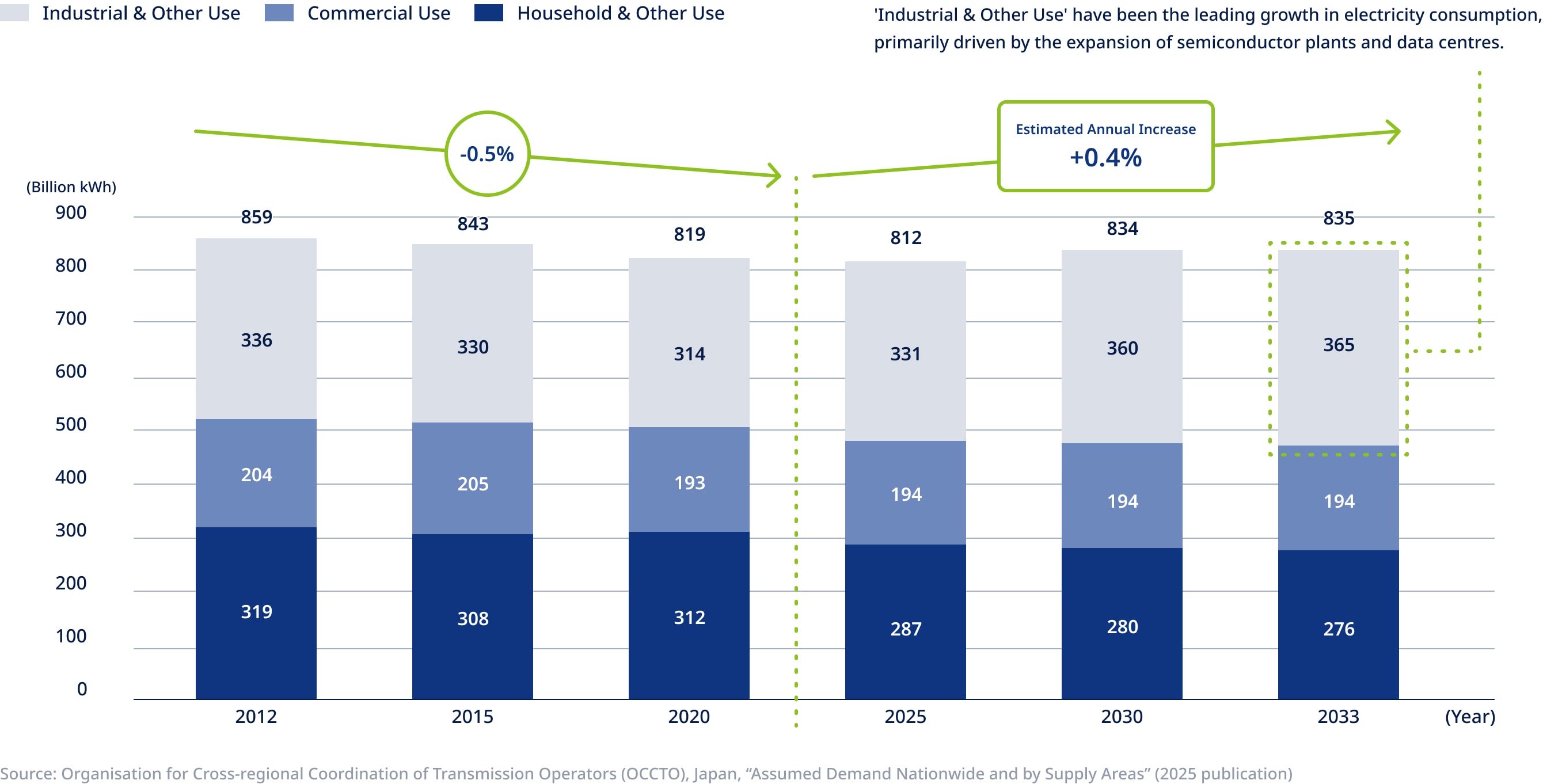
According to the energy mix in the 7th Basic Energy Plan, renewable energy is projected to account for 40 - 50% of Japan’s power supply by 2040.
Within this, wind power is expected to contribute 4 – 8%, showing the second-highest growth potential after solar energy in comparison to the result in 2022, indicating strong expectations for the sector.
Energy Supply and Demand Outlook
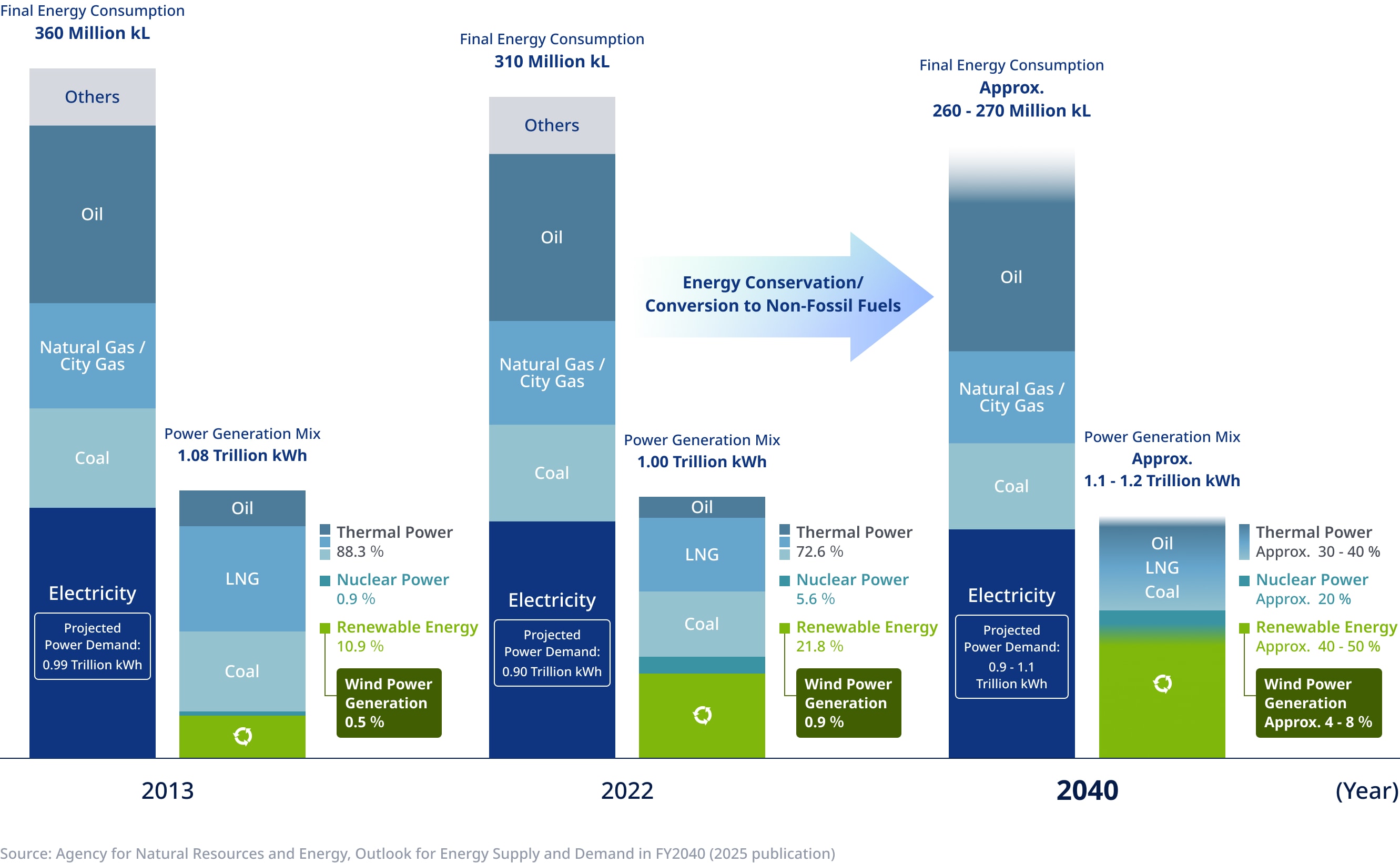
02Current Status of Wind Power Deployment in Japan
Despite national targets set for FY2030, wind power deployment in Japan remains significantly behind schedule. If this trend continues, renewable energy capacity may fall short of demand, delaying Japan’s progress toward a decarbonised society. To address this, both onshore and offshore wind farms must be developed steadily, making full use of wind power's characteristics.
Current Status of Onshore Wind Power Installation
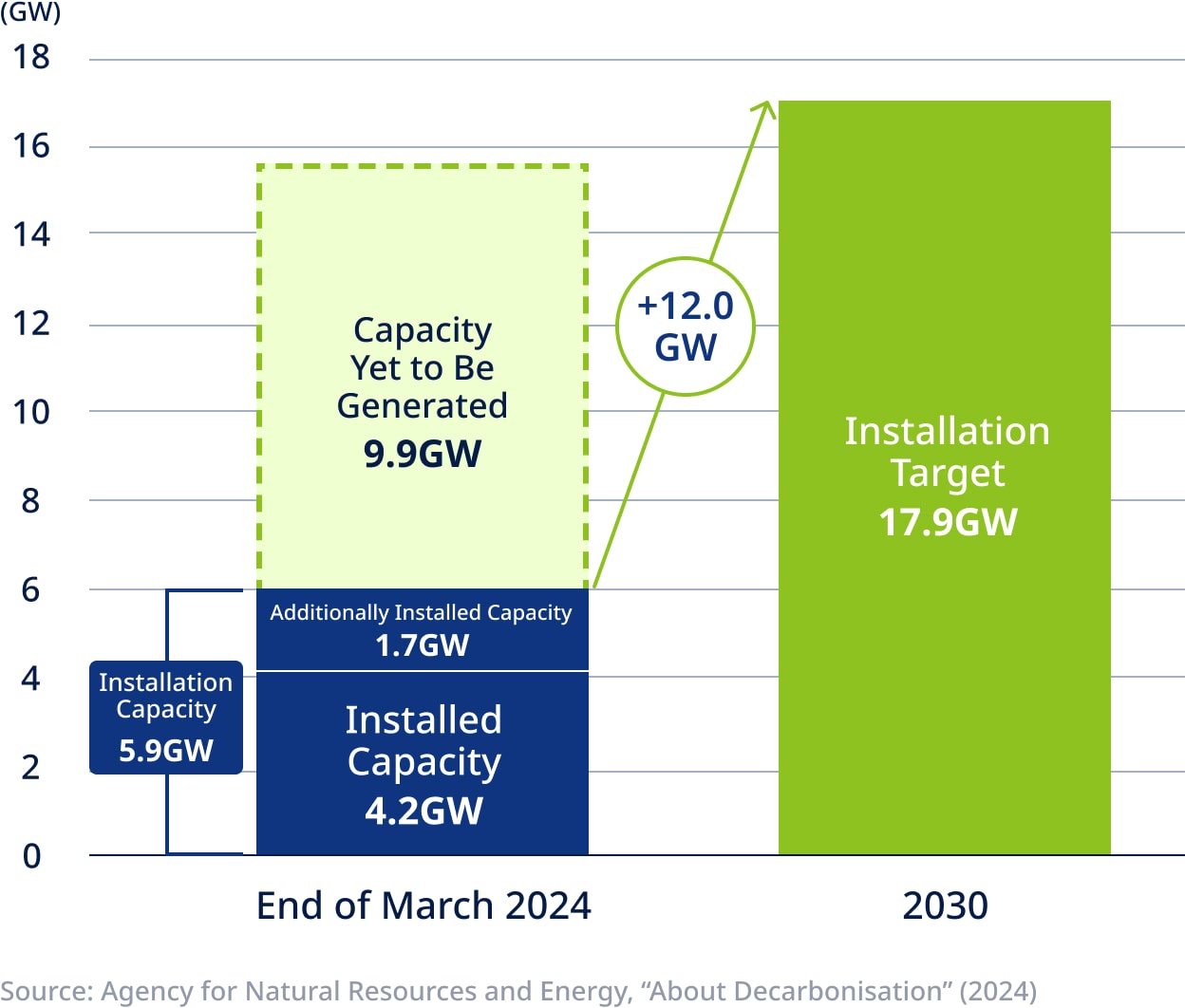
Current Status of Offshore Wind Power Installation
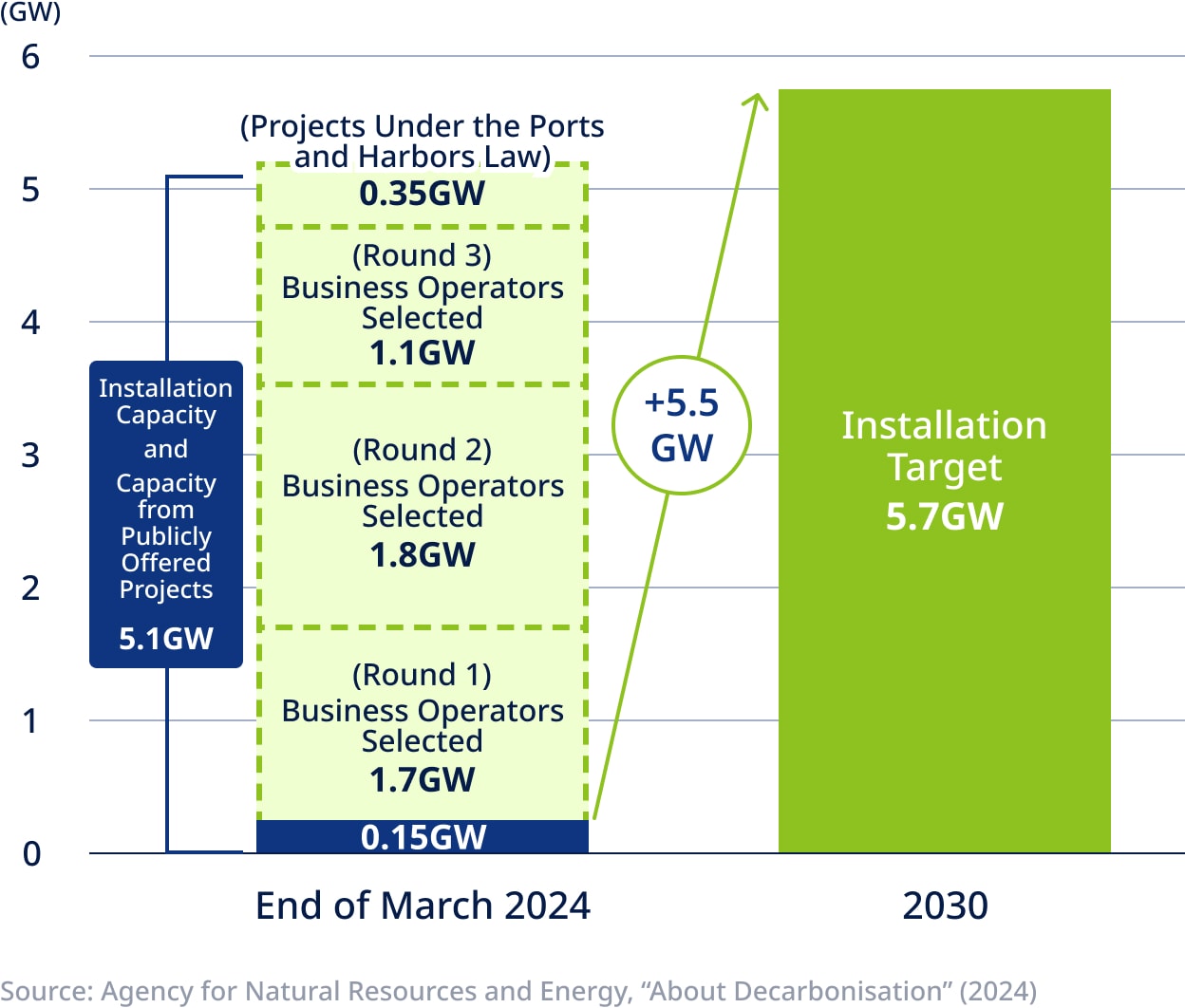
03Wind Power Industry Trends and Outlook
Wind power in Japan is facing a major turning point. The sector faces challenges such as the complexity of new project development, maximising the use of existing infrastructure, adapting to changing policies, and enhancing grid stability. Several key areas of focus are emerging for the future:
For example, Corporate Power Purchase Agreements (CPPAs), in which businesses directly procure power from renewable energy providers, are becoming more common.
These changes require developers to be more flexible and responsive to diverse market conditions.
04Japan Wind Development’s Vision for the Future
As a pioneer in Japan’s wind industry, JWD has built strong capabilities across the upstream and midstream segments of the wind power value chain - including development, construction, and O&M. Looking ahead, we aim to further diversify by entering new fields such as electricity retail and battery storage.
